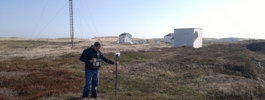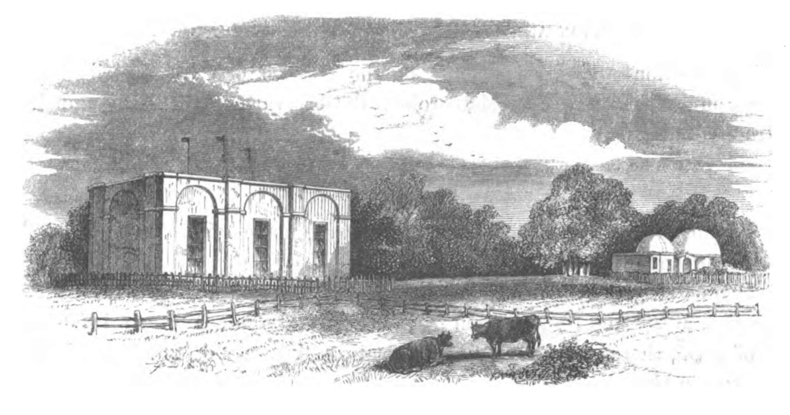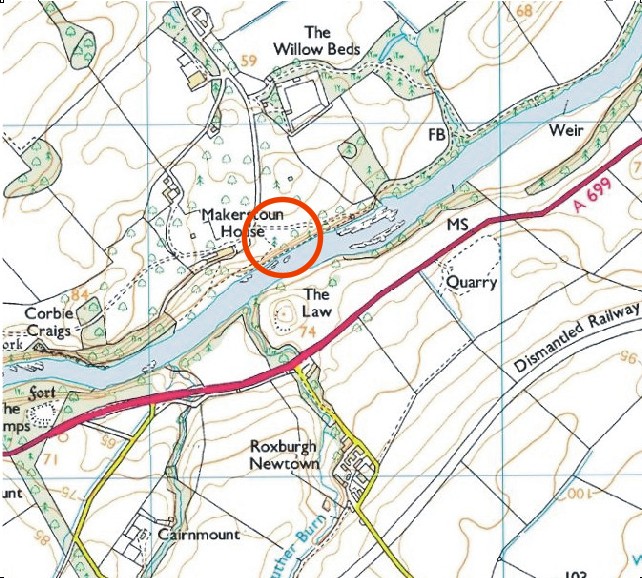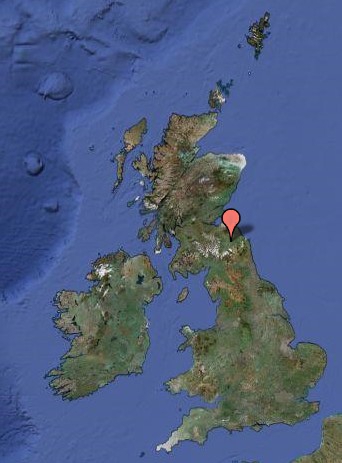Makerstoun Magnetic Observatory (1842-1855)
The magnetic and meteorological observatory at Makerstoun was founded in 1842. Its expense was "defrayed by the private munificence of General Sir Thomas MakDougall Brisbane"1, the former soldier in the Napoleonic Wars who had just returned to Scotland after a spell as Governor of New South Wales. It was there he had ordered the construction of the astronomical observatory at Paramatta, known as 'the Greenwich of the South', and had the city and river of Brisbane named in his honour.
Sited on Brisbane's wife's hereditary estate, Makerstoun was the only magnetic observatory in Scotland of its time. It was very well equipped, with declinometer, vertical and horizontal force magnetometers, and various meteorological instruments. Indeed, the clocks alone cost over 1200 guineas. The construction was also carefully planned. Internal dimensions were forty feet long by twenty feet wide, and it was "all framed and boarded with the best foreign fir wood, and fastened with copper nails, every particle of iron being excluded, so that the magnets may not be affected"2.
Brisbane also ensured that it was staffed by some of the most promising magnetic scientists in the country. First among them was John Allan Broun, who went on begin magnetic observations at the observatory at Trevandrum in India, and to use data from both observatories to propose a 26 day solar rotation and write on the magnetic effects of the lunar cycle. Another assistant was John Welsh, who was to become superintendent at Kew, where he developed some of the first self-recording magnetographs.
Magnetic observations were taken once every two hours from 1841 to 1843, and every hour in 1844 and 1845. From 1847, the number of observations dropped to five per day before being reduced to just two per day from 1850.
Makerstoun Magnetic Observatory was not intended to be a permanent fixture, and outlived its planned lifespan in continuing operations until 1855. After Brisbane died, the building that had contained the magnetic instruments was demolished. The neighbouring astronomical observatory, however, still stands.
1. In ‘Observations made at the magnetical and meteorological observatory at Toronto in Canada Vol. I - 1840, 1841, 1842.’ London, 1845, pp 11
2. In ‘Reminiscences of General Sir Thomas Makdougall Brisbane of Brisbane and Makerstoun, Bart’ Edinburgh, 1860. pp 69
Statistics
Geographic Coordinates:
| 55° 35´ N | 357° 59´ E |
Data
Mapping data licensed from Ordnance Survey with the permission of
HMSO Crown copyright.
All rights reserved. Licence Number: 100017897/2015




